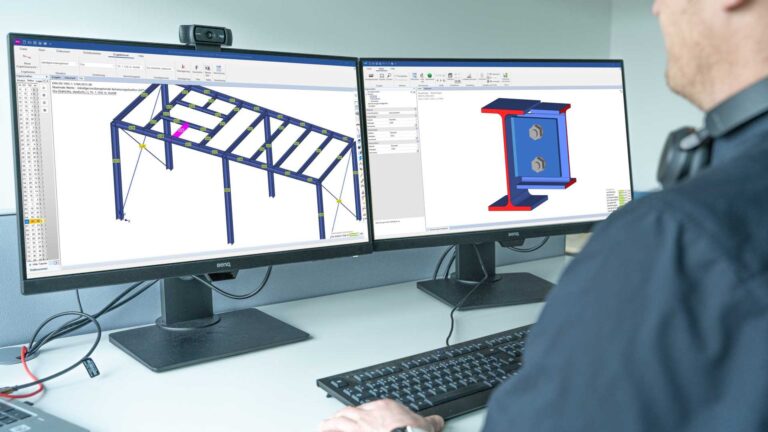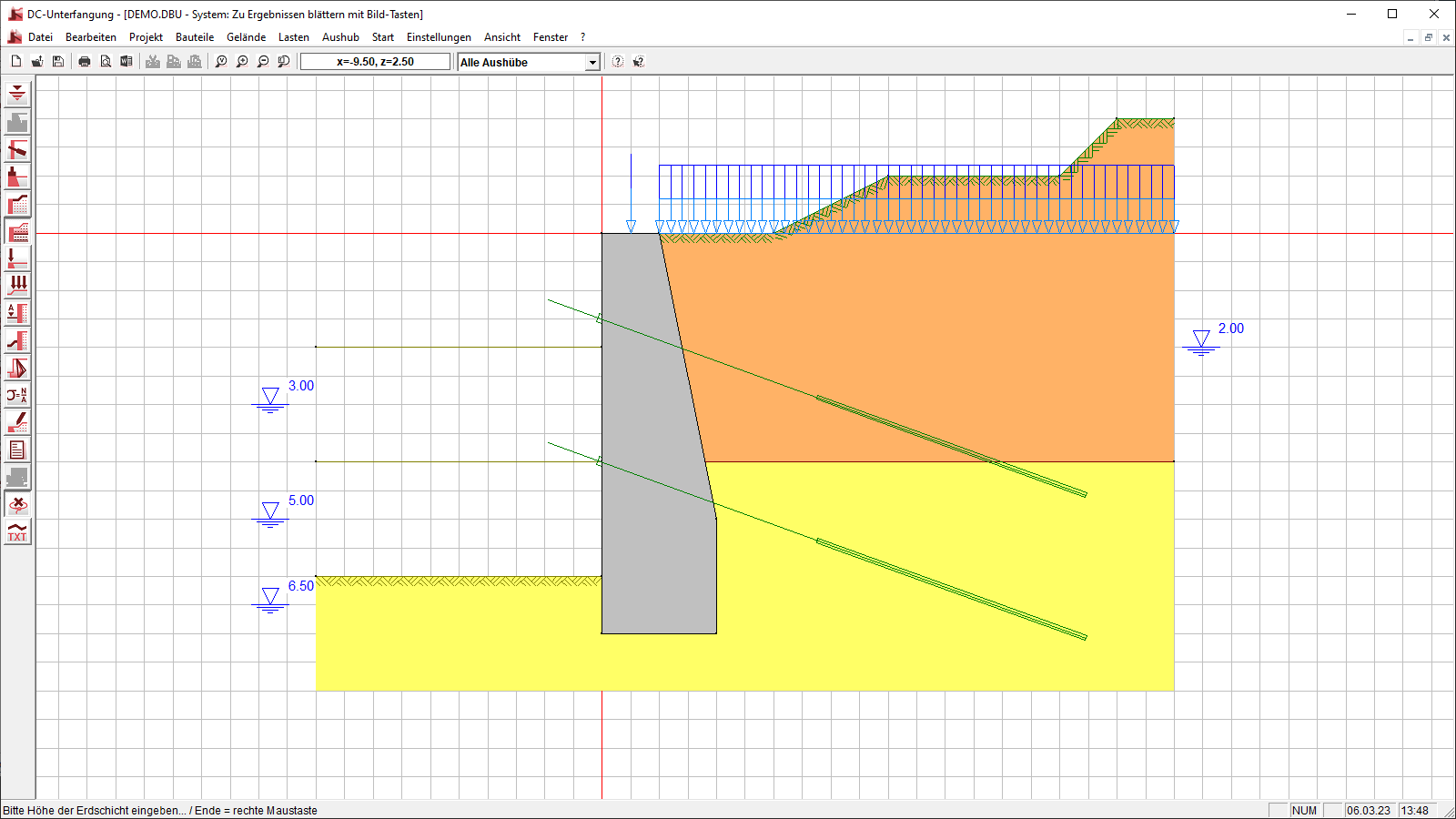
Building Underpinning & Gravity Wall
The “Building Underpinning and Gravity Wall” program provides the analysis and design of building underpinnings and gravity walls. Any unit of underpinning with several layers of anchors and stiffeners can be defined. For the unit of underpinning strengthened soil or concrete can be selected. The wall thickness and the anchor forces can be optimized.
Only available in FRILO Geotechnic Ultimate
Core capabilities
Structural system
- Freely definable geometry of the underpinning unit
- Strengthened soil as per DIN 4093 or concrete as per EC 2
- Freely selectable position of anchors and stiffeners: consideration of the pre-deformation, the spring constant, and the pre-stressing of anchors
- Different base restraints are selectable
- Any pre-construction and dismantling states, anchor positions and stiffeners can be selected for each construction state
- Optimization of wall thickness and anchor forces
- For the accurate modeling of the foundation dimensions, it is possible to import DXF graphics as a background
Soil
- Variable horizontal soil stratification
Ground surface
- Horizontal and inclined ground surface
Groundwater
- Input of groundwater levels to consider buoyancy
Loads
- Several load cases with:
- vertical and horizontal concentrated loads
- vertical line loads as the static load or railway traffic as the live load
- concentrated moments and consideration of earthquake loads and base water pressure underneath the wall
Reinforced concrete design
- Wall design as a concrete body with concrete compressive stress and the width of the compression zone
Geotechnical verifications
- Different earth pressure assumptions (active, increased active earth pressure and earth pressure at rest) and earth pressure redistributions (including triangular and trapezoidal)
- Elastic support with automatic adjustment to the passive earth pressure
- Analysis of the wall internal forces with anchor and subgrade reaction forces
- Stability verifications: sliding and ground failure
- Verification of the hydraulic ground failure at different water levels in front of and behind the wall
- Verification of the anchor lengths in the deep slip joint
- Analysis of the settlement
- Fixed base depth or iteration of the wall length
Output profile
- Detailed output of the individual load cases as text and graphics
File format
- Printer
Export options
- RTF export to MS Word
- Graphic export in JPG format
- DXF export
Foundation engineering
- EN 1997-1
- DIN EN 1997-1
- ÖNORM B 1997-1-1
- NF EN 1997-1
- BS EN 1997-1
- UNI EN 1997-1 with NTC 2018
- UNE EN 1997-1
- EN 1998-5
- DIN 1054
- DIN 4085
- DIN 4017
- DIN 4093
- SIA 267
Reinforced concrete
- EN 1992
- DIN EN 1992
- ÖNORM B 1992
- NF EN 1992
- BS EN 1992
- UNI EN 1992
- DIN 1045
- SIA 262
- ÖNORM B 4700
- BS 8110
Support resources
News

Corporate headquarters as reinforced concrete skeleton structure
With the construction of a new corporate headquarters, Heidelberg Materials has demonstrated the remarkable range of reinforced concrete as an attractive building material. FRILO and Allplan were used by the structural engineers.

FRILO launches version 2024-2 with powerful updates for structural analysis and design
Highlights include the optimised design of Schöck Isokörbe®, the advanced integration of DC foundation engineering programs into the FRILO environment and new RSX interfaces for detail verifications in steel construction.


